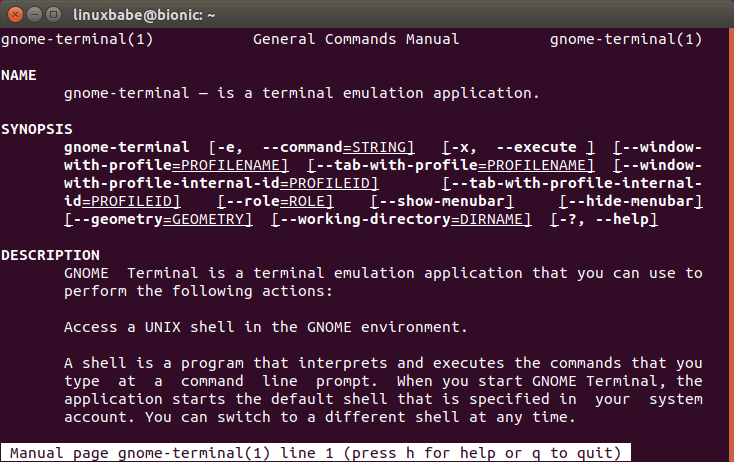How do you read a loop file in Unix?
Walk through the contents of a file in Bash # Open vi Editor via a_file. Txt # Enter the lines below Monday, Tuesday, Wednesday, Thursday, Friday, Saturday, Sunday # cat the file cat a_file. Text. #!/bin/bash while reading LINE do echo “$LINE” done < a_file. text. #!/bin/bash file=a_file. txt for I in `cat $file` do echo “$i” done.
How do I read a loop file?
Create a file called company2. Txt with a backslash and run the following command to run the script. The output shows the file contents without any backslash. If you want to read every line of a file by omitting the backslash escape, you must use the ‘-r’ option with the read command in the while loop.

How do you run a file in Unix?
Run the following command to browse a directory and print the file name: for FILE in *; echo $FILE; finished. Now use the touch command to create a few text files: touch file-1. Text. touch file-2. text. touch file-3. text. touch file-4. text. touch file-5. text.
How do I view a file in Unix?
In Unix, we can view the file using the vi or view command. If you use the vi knowledge to open the file, you can view/update the file. Using the view command makes it read-only. That means you can view the file but can’t edit anything in that file.
How do you read a file in Linux?
You should be exposed to Linux’s basic commands from the Linux terminal. Some orders, like Cat, and ls, are used to read files from the airport. Open the file using the tail command. Open the file using the cat command. Open files with fewer commands. Available the file with more power. Open the file with nl command.
What is IFS in a while loop?
The while loop syntax IFS sets the field separator (default is white space). This is a failsafe while reading a loop for reading text files. The -r option to read the command disables backslash escaping (e.g., n, t).
How do you read a loop file in Python?
Reading a file line by line with the for a loop is possible. First, open the file with the Python open() function in read mode. The available () function returns a file handler. Use the file handler in your for loop and read line by line all the lines of the given file.
How do you use the cat command?
The Cat (concatenate) command is very commonly used in Linux. It reads data from the file and outputs its contents. It helps us create, view and merge files.
How do you read in a full line for loops with spaces?
For loop splits when it sees a white space such as space, tab, or newline. So you need to use IFS (Internal Field Separator): IFS=$’n’ # make newlines the only separator before j in $(Cat ./file_wget_med) do echo “$j” made # Note: IFS needs to be reset to standard!.
What is a loop command?
The LOOP command defines the beginning of a loop structure, and the END LOOP command represents its end. The LOOP command returns control to LOOP unless the cutoff is reached. When the cutoff is advanced, control moves to the command immediately following END LOOP.
What are the loops in Unix?
Unix / Linux – Shell Loop Types The while loop. The for loop. The top loop. The select loop.
How many types of loops are there in Linux?
There are three basic loop constructs in Bash scripting, for loop, while loop, and Until loop. In this tutorial, we’ll cover the basics of for-loops in Bash. We’ll also show you how to use the break-and-continue statements to change the flow of a loop.
Is Linux a command?
The Linux command is a utility of the Linux operating system. All basic and advanced tasks can be performed by running commands. The orders are executed on the Linux terminal. The terminal is a command line interface for interacting with the system, similar to the command prompt in the Windows operating system.
What is a read command in Unix?
Read is a command on Unix and Unix-like operating systems such as Linux. It reads an input line from standard input or a file passed as an argument to the -u flag and assigns it to a variable. In Unix shells, such as Bash, it is present as a built-in shell function, not as a separate executable file.
How do I open a file in the Linux command line?
To open a file from the command line with the default application, just type open followed by the file name/path. Edit: According to Johnny Drama’s comment below, if you want to be able to open files in a particular application, put -a followed by the name of the application in quotes between open and the file.
What does the read command do in Linux?
Read order in the Linux system is used to read from a file descriptor. This command reads the total number of bytes of the specified file descriptor in the buffer. If the count or count is zero, this command can detect the errors. But on success, it returns the number of bytes read.
How do I grep a line in Linux?
The grep command, in its most basic form, has three parts. The first part starts with grep, followed by the pattern you’re looking for. After the string comes the filename that the grep searches through. The command can contain many options, pattern variations, and file names.
How CP works in Linux?
The Linux cp command is used to copy files and folders to another location. To copy a file, specify “cp” followed by the file’s name to copy. Then select the place where the new file should appear. The new file does not have to have the same name as the file you are copying.
